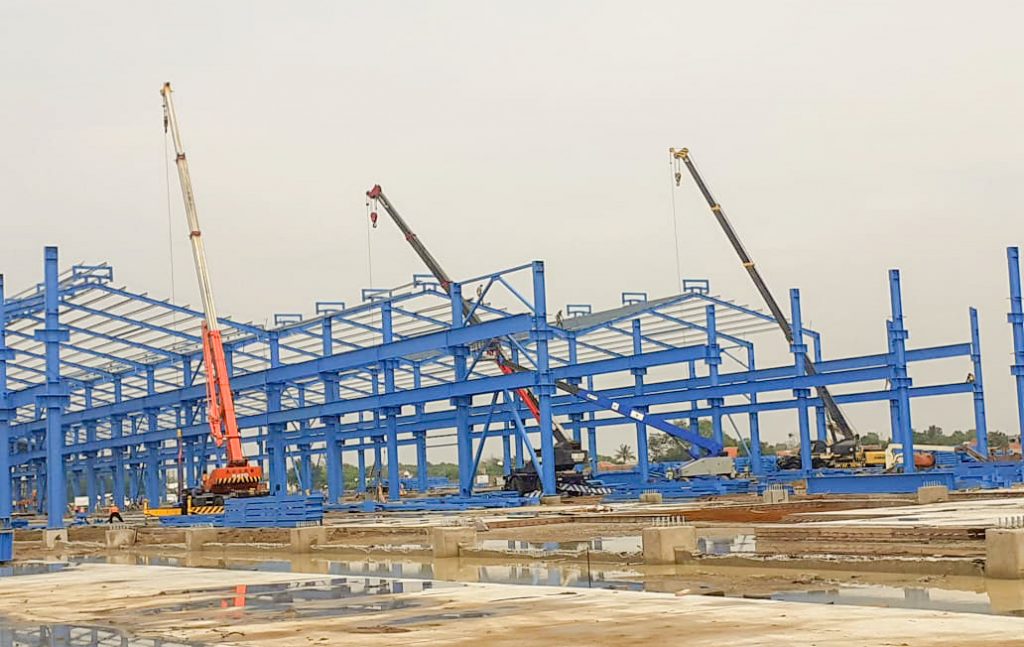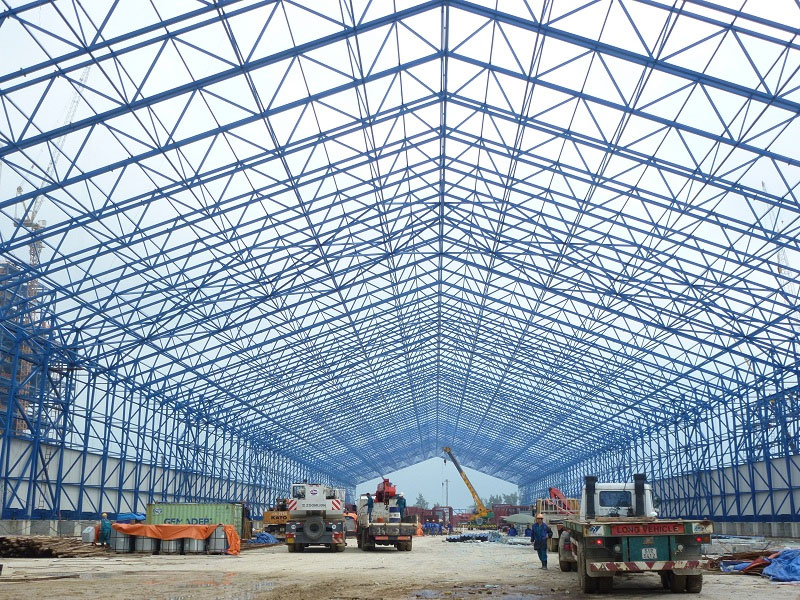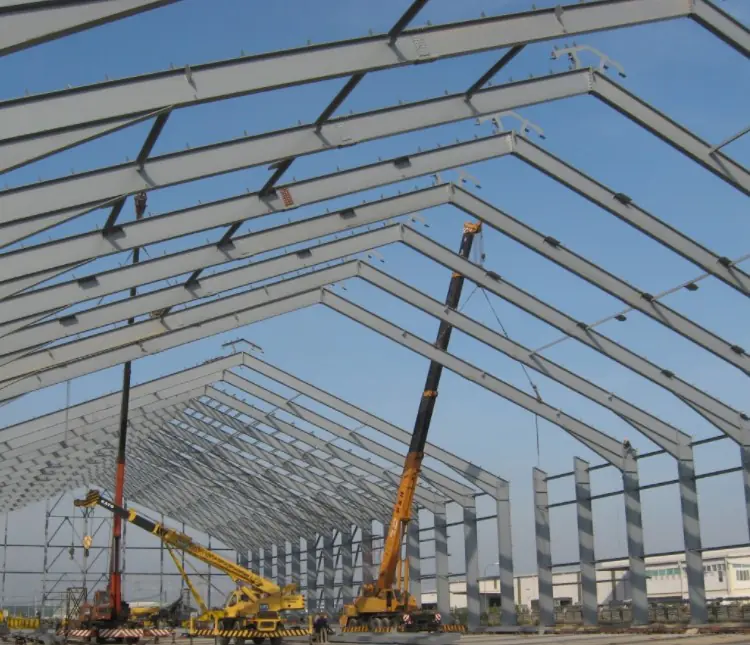Steel Structure Buildings: Solutions for Earthquake-Prone Areas
Learn the advantages of steel structure buildings for earthquake-prone areas. Strong, flexible, and durable – an ideal solution for seismic safety.
Steel structure buildings for earthquake-prone areas are becoming the primary choice in modern construction. This article reviews the earthquake resistance of steel buildings and various benefits of their use in seismically active regions.
From strength and flexibility to cost-efficiency, steel structures offer comprehensive solutions to construction challenges in earthquake zones. Discover why architects and engineers increasingly choose steel as the material of choice to enhance building safety and resilience in earthquake-prone areas.
1. Are steel structure buildings earthquake resistant?
Steel structure buildings have proven to be one of the best choices for construction in earthquake-prone areas. Steel’s resistance to seismic shocks is rooted in the unique and advantageous intrinsic properties of this material.
First, steel has a very high strength-to-weight ratio. This means steel buildings can achieve exceptional structural strength without adding excessive load to the foundation. During an earthquake, this lighter weight reduces the inertial forces acting on the structure, thus reducing the risk of damage.
Second, steel is ductile, meaning it can undergo plastic deformation without sudden failure. This characteristic is crucial in earthquake-resistant design as it allows the structure to absorb and dissipate seismic energy, rather than just resisting static loads.
Additionally, connections in steel structures can be designed with high precision to transmit forces efficiently. Modern bolt and weld connections can be engineered to maintain structural integrity even under intense cyclic loads during earthquakes.
Steel buildings also have advantages in terms of design flexibility. Engineers can integrate vibration damping systems, base isolators, and other structural elements specifically designed to enhance seismic performance.
Empirical evidence from major earthquakes worldwide has demonstrated the remarkable resilience of well-designed steel structure buildings. While no structure is entirely “earthquake-proof,” steel buildings designed in accordance with modern building codes have shown remarkable ability to withstand and protect their occupants during significant seismic events.
However, it should be noted that a building’s earthquake resistance doesn’t solely depend on its structural material. Factors such as architectural design, construction quality, soil conditions, and maintenance also play crucial roles. Therefore, a holistic approach considering all these aspects is necessary to ensure optimal building safety in earthquake-prone areas.

2. Key benefits of using steel structure buildings in earthquake regions
Strength and Stiffness: Steel is an extremely strong and stiff construction material, making it an ideal choice for buildings in earthquake-prone areas. Steel’s high strength allows structures to withstand large lateral and vertical loads that occur during earthquakes. Steel’s remarkable strength-to-weight ratio enables engineers to design buildings that are robust yet relatively light, reducing inertial forces during seismic events.
Steel’s stiffness also contributes to the overall stability of the structure. Steel buildings tend to experience smaller deflections under lateral loads, which helps prevent damage to non-structural components and improves occupant comfort during mild to moderate shaking. Moreover, steel’s homogeneous nature ensures consistent and predictable behavior throughout the structure, facilitating accurate analysis and design for earthquake resistance.
Ductility: One of the most important advantages of steel in the context of earthquake resistance is its high ductility. Ductility refers to a material’s ability to undergo significant plastic deformation before failure. This characteristic is crucial in earthquake-resistant design as it allows the structure to absorb and dissipate seismic energy through deformation, rather than sudden collapse.
During an earthquake, steel buildings can undergo considerable deformation without losing their load-bearing capacity. This ductile behaviour provides a large safety margin, allowing occupants time to evacuate and preventing catastrophic collapse. Additionally, steel’s ductility enables the use of performance-based design concepts, where structures can be designed to respond to earthquakes in controlled and predictable ways.
Quick and Easy Construction: Steel structure buildings offer significant construction speed compared to traditional methods like reinforced concrete. Steel components can be prefabricated off-site with high precision, reducing time and labour required on the construction site. This faster assembly process is highly advantageous in earthquake-prone areas, where minimising disruption and completing projects quickly can be a priority.
Steel construction also tends to be cleaner and less disruptive to its surroundings. This is particularly relevant in densely populated urban areas that are often in active seismic zones. Moreover, the ease of construction reduces the risk of installation errors that could compromise the structural integrity of the building – a critical factor in seismic performance.
Flexibility in Design: Steel offers remarkable design flexibility, allowing architects and engineers to create structures that are not only earthquake-resistant but also aesthetically pleasing and functional. Steel’s high strength enables longer spans and more open spaces, which can enhance safety during emergency evacuations.
This flexibility also facilitates the integration of advanced vibration damping systems and base isolators, which can significantly improve a building’s seismic performance. For example, tuned mass dampers and bracing systems can be easily incorporated into steel frames to reduce the structure’s dynamic response to earthquake shaking.
Durability: Steel structure buildings offer superior long-term durability, an important aspect for infrastructure in disaster-prone areas. Steel is resistant to rot, insect attack, and many forms of environmental degradation that can affect other materials. With proper maintenance, steel structures can maintain their structural integrity for decades, ensuring consistent seismic performance throughout the building’s lifetime.
Steel’s durability also means that buildings are more capable of withstanding repeated shocks and aftershocks, which are common in active seismic zones. The ability to endure multiple seismic events without significant degradation is crucial for long-term safety and sustainability of infrastructure in earthquake-prone regions.
Cost-Effective: While the initial cost of steel may be higher compared to some other materials, steel structure buildings often prove more cost-effective in the long run, especially in earthquake-prone areas. Factors contributing to cost efficiency include:
- Shorter construction time, reducing labor and financing costs.
- Reduced need for structural repairs and maintenance.
- Potential for lower insurance premiums due to better resistance to seismic damage.
- Higher residual value, as steel can be recycled or reused.
- Reduced post-earthquake repair costs and operational downtime.
Furthermore, steel’s flexibility allows for easier adaptation and retrofitting to meet changing building codes or enhance seismic performance in the future, further increasing its long-term value.

3. Conclusion
Steel structure buildings have proven to be a superior solution for construction in earthquake-prone areas. The combination of strength, ductility, and design flexibility allows for the creation of structures that are not only resistant to seismic shocks but also efficient and aesthetically pleasing. The speed of construction and ease of installation further enhance its appeal in areas requiring rapid development or reconstruction.
The long-term durability of steel and its overall cost efficiency make it a wise investment for infrastructure in active seismic zones. While no building is entirely “earthquake-proof,” well-designed steel structures offer superior levels of safety and performance during seismic events.
As technology and design practices evolve, the potential of steel structure buildings in earthquake-prone areas continues to increase. Innovations in connections, damping systems, and seismic analysis techniques promise further improvements in resilience and efficiency. Thus, steel remains the material of choice for architects, engineers, and urban planners aiming to create safer and more resilient built environments in areas vulnerable to seismic activity.


Post Comment